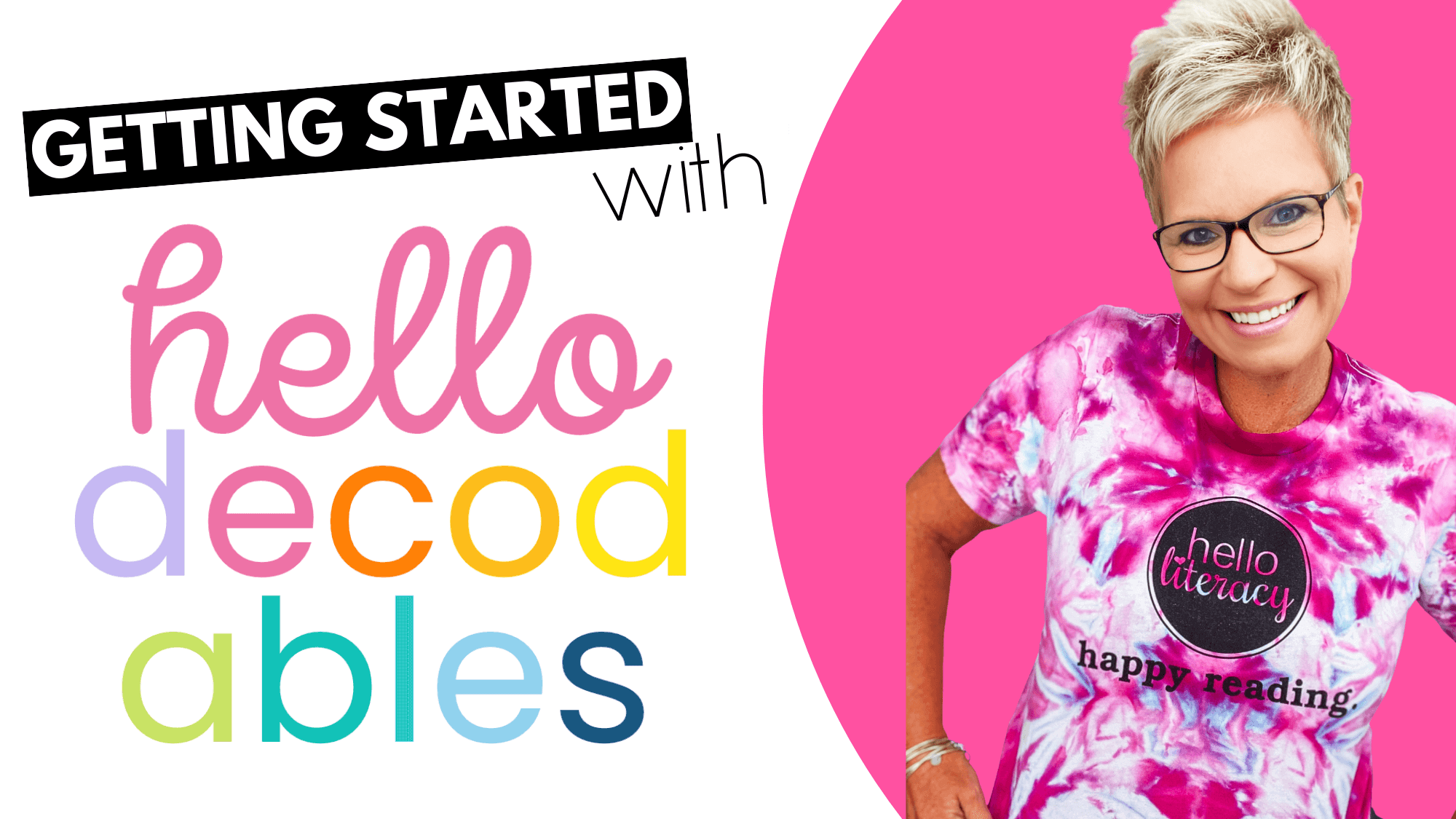
· By Jen Jones
How Reading Science is Shaping Today's Educational Strategies
Introduction
How the science of reading informs 21st-century education is a hot topic, largely because it promises to transform how our children learn to read and succeed academically. By focusing on research-backed methods, educators are better equipped to teach literacy skills effectively. Here's a quick look at the essentials:
1. Phonics and Phonemic Awareness: Key for decoding words. 2. Reading Fluency: Crucial for smooth, automatic reading. 3. Vocabulary and Comprehension: Essential for understanding text.
The science of reading draws from decades of research. It combines insights from psychology, neuroscience, and education to create best practices for reading instruction. This approach helps in early identification of at-risk readers and supports targeted interventions.
In the 21st century, literacy is more than just reading; it's about understanding and engaging with content in a meaningful way. Modern classrooms are incorporating these scientific insights to make learning more efficient and inclusive for all students.

The Importance of Reading in the 21st Century
Reading in the 21st century goes beyond simply decoding words on a page. It's about literacy, cultural understanding, and self-expression.
Literacy
Literacy is foundational for participating in today's society. It encompasses the ability to read, write, speak, and listen effectively. According to the National Center for Education Evaluation, students with strong literacy skills are more likely to succeed academically and professionally. Literacy also includes the ability to navigate and evaluate information online.
Cultural Understanding
Reading also plays a crucial role in fostering cultural understanding. By exposing students to diverse texts, we can broaden their perspectives and promote empathy. For example, reading stories from different cultures helps students appreciate and respect diversity. This cultural literacy is essential for building inclusive communities.
Self-Expression
Lastly, reading is a powerful tool for self-expression. It enables students to articulate their thoughts and emotions. According to a study published in *The Elementary School Journal*, students who engage in rich and focused reading instruction show significant improvements in their oral vocabulary. This enhanced vocabulary allows them to express themselves more clearly and confidently.

In summary, reading in the 21st century is a multifaceted skill that supports literacy, cultural understanding, and self-expression. Modern educational strategies are evolving to incorporate these elements, making learning more holistic and inclusive.
Next, we'll explore how the science of reading informs 21st-century education by diving into phonics, fluency, vocabulary, and comprehension.
How the Science of Reading Informs 21st-Century Education
The Role of Phonemic Awareness
Phonemic awareness is a critical skill in reading. It’s the ability to hear, identify, and manipulate individual sounds (phonemes) in spoken words. Research shows that strong phonemic awareness is a key predictor of reading success. Children who can break down words into their smallest sounds are better at decoding and recognizing words. This skill is foundational because it underpins the ability to learn phonics and read fluently.
Case in Point: A study highlighted by the What Works Clearinghouse found that phonemic awareness significantly boosts reading skills when taught alongside letters. For example, children who can read the letters "s," "a," "t," "p," "i," and "n" can blend these sounds to form words like "sat" and "pin," enhancing their reading proficiency.
Integrating Phonics and Word Recognition
Phonics instruction is the systematic teaching of how letters and letter combinations represent specific sounds. Integrating phonics with word recognition helps children understand the relationship between written and spoken language. This method teaches students to decode words by sounding them out, which is essential for reading unfamiliar words.
Fact: According to research cited in the Institute of Education Sciences, explicit phonics instruction is crucial for developing reading skills. Decodable texts, which use words that align with the phonics rules being taught, are particularly effective. For instance, a book focusing on the phonics skill of long "a" spelled "ai" and "ay" might include words like "train," "paint," and "crayons."
Developing Fluency and Comprehension
Fluency and comprehension are the goals of reading instruction. Fluency involves reading text accurately, quickly, and with proper expression. Comprehension is the ability to understand and interpret what is read. Both are essential for reading success and overall academic achievement.
Statistics: The Colorado Department of Education emphasizes that students who read fluently are better able to comprehend texts. Regular practice with connected text, where students read aloud daily, supports both fluency and comprehension.
Quote: "Students who aren't reading at grade level aren't able to comprehend up to half of the printed fourth-grade curriculum," states the Delaware Department of Education. This underscores the importance of developing these skills early.
Real-World Example: In Indiana, schools implementing a science of reading approach have seen significant improvements. Teachers use data-driven instruction and multisensory approaches to enhance phonics and comprehension skills, leading to better student outcomes.
By focusing on phonemic awareness, integrating phonics and word recognition, and developing fluency and comprehension, we can create a robust framework for reading instruction. This approach not only improves literacy rates but also fosters a love for reading among students.
Next, we'll explore how to implement the science of reading in classrooms through evidence-based practices and effective teaching strategies.
Implementing Science of Reading in Classrooms
Step-by-Step Classroom Integration
1. Professional Development: Start with training teachers on the principles of the science of reading. Understanding phonemes, graphemes, and phonics is crucial. According to research, teachers with strong knowledge in these areas can significantly boost students' reading skills .
2. Structured Literacy Instruction: Implement a structured approach to literacy. This means explicitly teaching phonemic awareness, phonics, fluency, vocabulary, and comprehension. For example, using decodable texts that align with the phonics skills being taught can be very effective.
3. Screening and Assessment: Regularly assess students to identify those at risk of reading difficulties. Early detection allows for timely interventions, which are more effective.
4. Data-Driven Instruction: Use assessment data to tailor instruction to meet individual student needs. Adjust teaching methods based on what the data reveals about student progress.
5. Multisensory Approaches: Incorporate visual, auditory, and kinesthetic elements into lessons. This helps all students, especially those with learning differences, to grasp phonics and other reading skills better.
6. Family and Community Engagement: Involve families in the learning process. Provide resources and training to help parents support their children's reading development at home.
Tools and Resources for Educators
Decodable Texts: These are books designed to align with the phonics skills being taught. For example, if students are learning the long 'a' sound, the decodable text will contain words like "train" and "paint." Using decodable texts can help reinforce new phonics skills and build confidence in young readers .
Systematic Phonics Programs: Programs that offer a structured approach to teaching phonics are essential. These programs break down the process into manageable steps, ensuring that students master each skill before moving on to the next.
Support Networks: Create a network of support within the school. This includes collaboration among teachers, reading specialists, and administrators. Sharing strategies and resources can lead to more effective implementation of the science of reading.
By following these steps and utilizing these resources, educators can create a classroom environment that supports all students in developing strong reading skills. Next, we'll discuss the impact of the science of reading on student outcomes and explore case studies from Indiana schools.
Impact of Science of Reading on Student Outcomes
Prevention and Intervention Strategies
Early detection and targeted interventions are key components of how the science of reading informs 21st-century education. Identifying at-risk readers early allows for timely support, preventing long-term reading difficulties. Regular screening and assessments help teachers spot students who need extra help.
For example, a study published in the Reading Research Quarterly highlights that early interventions can significantly improve literacy outcomes. Schools that implement systematic screening and interventions see higher success rates in reading proficiency.
Case Studies from Indiana Schools
Indiana schools have adopted the science of reading approach with impressive results. By focusing on phonetic strategies, they have seen notable improvements in literacy rates.
Phonetic Strategy Implementation
Indiana schools follow a structured literacy approach, focusing on phonemic awareness, phonics, fluency, vocabulary, and comprehension. Teachers receive professional development to understand these principles deeply.
Results
According to a report on the implementation of the science of reading in Indiana, students showed remarkable progress. Schools reported increased reading proficiency scores, with many students moving from below grade level to meeting or exceeding expectations.
One notable case is that of Maple Elementary, where the adoption of phonics-based instruction led to a 20% increase in reading scores within a single academic year. Teachers noted that students were more confident and engaged during reading activities.
These examples underscore the effectiveness of the science of reading in improving student outcomes. By focusing on early detection and targeted interventions, schools can make a significant impact on literacy rates and overall comprehension skills.
Frequently Asked Questions about Science of Reading
Why is phoneme awareness crucial?
Phoneme awareness is the ability to hear, identify, and manipulate individual sounds in spoken words. This skill is critical because it lays the foundation for reading. According to research, children who develop strong phoneme awareness are better at decoding words and reading fluently.
Key Points: - Decoding Skills: Phoneme awareness helps children break down words into individual sounds, making it easier to read new words. - Early Detection: Identifying phoneme awareness issues early can help teachers provide targeted interventions. - Improved Outcomes: Studies show that students with strong phoneme awareness perform better in reading comprehension and vocabulary.
How does science of reading enhance student learning?
The science of reading uses evidence-based practices to teach reading. This approach focuses on systematic instruction in phonics, fluency, vocabulary, and comprehension.
Key Elements: - Systematic Phonics Instruction: Teaching phonics in a structured way helps students understand how letters and sounds form words. For example, Arkansas required all elementary teachers to be proficient in scientific reading research by 2021. - Fluency Development: Practicing reading helps students read more quickly and accurately, which improves comprehension. - Vocabulary Building: A rich vocabulary helps students understand what they read and express themselves clearly.
What are decodable texts and their importance?
Decodable texts are specially designed books that use words and sentence structures aligned with the phonics skills students are learning. These texts allow students to practice their decoding skills in a meaningful context.
Benefits: - Skill Application: Students apply what they've learned in phonics lessons to read full sentences and short stories. - Confidence Building: Successfully reading decodable texts boosts students' confidence and motivates them to read more. - Progressive Learning: Decodable texts progress from simple to complex skills, helping students build on their knowledge step-by-step. For instance, the first five books in the Hello Decodables pink set only use basic sounds like a, i, c, p, t, d, m, s, f, n.
By integrating these elements into classroom instruction, educators can significantly enhance student learning and literacy outcomes.
Conclusion
As we look to the future of education, it is clear that the science of reading will play a crucial role in shaping how we teach literacy. At Hello Decodables, we are committed to leveraging this evidence-based approach to ensure every child has the opportunity to become a confident reader.
Hello Decodables
Our mission at Hello Decodables is to provide teachers and parents with the tools they need to teach reading effectively. By using decodable texts, we help children build foundational skills in a systematic and engaging way. Our books are designed to support phonemic awareness, phonics, fluency, vocabulary, and comprehension—key components identified by the science of reading.
You can explore our range of decodable books and learn more about how they can support your child's reading journey on our Guide to Decodable Books page.
Future of Education
The future of education is bright with the integration of scientific research into teaching practices. By continuously updating our methods based on the latest research, we can ensure that our educational strategies are effective and inclusive. This means ongoing training for educators, development of new resources, and a commitment to evidence-based practices.
One exciting development is the increasing use of technology to support reading instruction. Tools like interactive e-books and educational apps can provide personalized learning experiences, making it easier for teachers to address the diverse needs of their students.
Ongoing Research
The field of reading science is always evolving. Researchers are constantly uncovering new insights into how children learn to read and how we can best support them. At Hello Decodables, we stay informed about these developments to ensure our resources are always aligned with the latest findings.
For example, recent studies highlight the importance of early intervention and targeted support for struggling readers. By identifying at-risk students early and providing them with the right interventions, we can significantly improve literacy outcomes.
In conclusion, the science of reading is not just a theoretical concept but a practical guide that informs our educational strategies. At Hello Decodables, we are dedicated to applying these principles to help every child succeed in their reading journey.

We invite you to join us in this mission. Together, we can unlock reading for all children.
For more information on how our decodable books can benefit your classroom or home, visit our Guide to Decodable Books.
